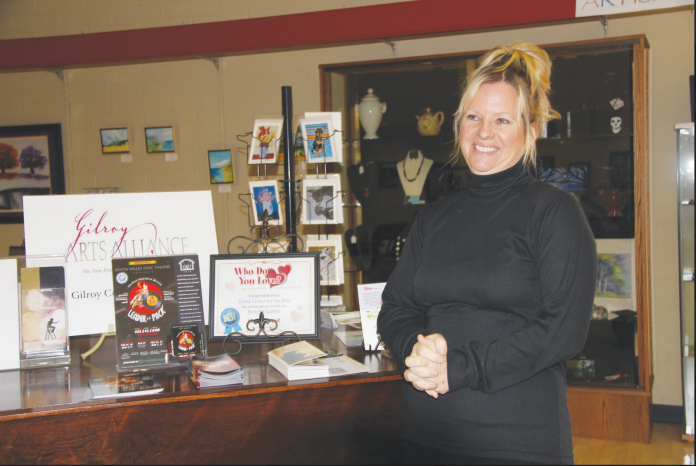Last year, 6,000 people attended events at the Gilroy Center for the Arts, in increments of 49—but frustrated members of the arts community say they could have handled many, many more if they had the space.
They didn’t publicize a Black History Month event because they feared they couldn’t handle the number of people who would want to come. When they put on a play, they have to stretch it out over weekends in order to make back the money they spent. They don’t have the capacity for the kinds of events that would invigorate the downtown. Even the famed local Mariachi Academy of Music has had to move because of a lack of space.
On Monday, three members of the Gilroy Arts Alliance asked the City Council to consider raising money to make the current Gilroy Center for the Arts at Seventh and Monterey streets into a showcase theater that would draw people downtown.
“We are really stuck,” said L. Mattock Scariot, the city’s Arts and Culture Commission chair, who is also part of the local nonprofit that leases the building from the city to operate the downtown arts venue.
Describing events where people are turned away because safety regulations say the building cannot hold more than 49 people, Scariot told the council the local arts community is nevertheless unanimous in wanting to stay at their current location and proceed with a phased build-out of the site, instead of waiting for a brand new large facility at another location.
“We want that big building but we are willing to work towards it,” said Scariot. “We would now like to move in phases. We understand there are limited funds.”
Back in 2004, the arts center project was estimated at $12.3 million. That figure is now woefully out of date.
City staff and arts stakeholders realize that the vision of a large-scale arts facility that can host performances, exhibitions, special events, and classroom instruction would cost at least $20 million, according to the report. The center’s calendar is now full with plays, concerts, rehearsals and art exhibits.
Funded through development impact fees, which are contingent on the city’s rate of growth, the arts center project comprises about 5 percent of the aggregate Public Facilities program, according to the report. To date, the amount collected that is attributable to the Arts Center is about $1.4 million.
Arts stakeholders said they are willing to proceed with fundraising and pursuing grant funding with the city’s support to put toward the art center expansion. They say that if the city shows financial support, they will be able to raise more contributions from businesses.
The city of Gilroy has invested about $4.7 million to purchase the site, which also includes the plot where the Gilroy Demonstration Garden is located, along with minor improvements and studies.
To help increase occupancy and meet the growing demand for arts programs, activities and special events in the city, the arts stakeholder group recommended retrofitting the existing building in the near term at a cost of $1.5 million to $2 million.
“We are ready for the next level,” said Scariot at the City Council meeting.
Scariot recounted how the center’s resident theater group, Limelight Actors Theater, need two to three weekends of shows just to recoup costs because of capacity limitations, while other performing arts groups have had to go elsewhere for rehearsals and classes because they grew too large for the building.
City Councilmember Roland Velasco, who raised the issue of the arts center project last year, and who tried to hammer down a project timeline during council discussions on Monday, said it was important for the arts community to come to a consensus on what they wanted—and they have.
He supports the stakeholder group’s recommendation of completing the project in phases, with the first being the retrofitting of the existing arts center building so “they can move past this 49-person limitation.”
Velasco added that the plan, at this stage, is for the arts stakeholder group to continue discussions over the next year with the new city administrator, Gabriel Gonzalez, so the project scope and phasing of improvements are aligned with cash flow and the city’s Capital Improvement Budget, which will not be adopted until Spring 2017.
While it seems there will still be another year to go before the project moves forward in any noticeable way, Velasco said he is happy that it’s getting attention, and that he sees the arts center as a “cornerstone for the downtown area.
“I don’t think Gilroy should just be about police, fire, parks—a healthy arts community is the heart and soul of the community.”















